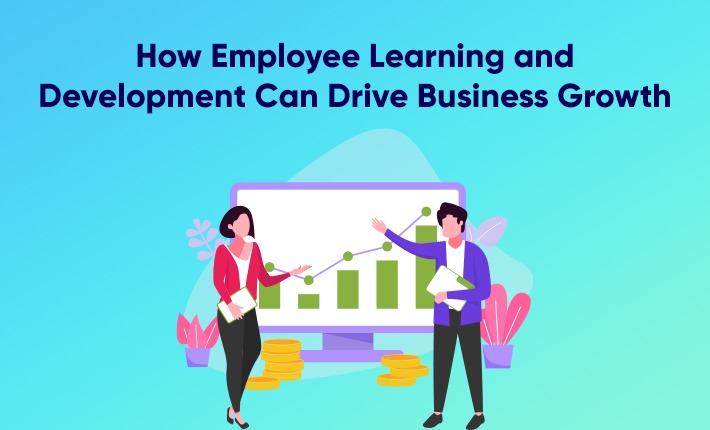Employee Learning and Development (L&D) is the process of providing employees with the necessary knowledge, skills, and competencies to perform their jobs effectively and grow in their careers. It involves providing training, education, coaching, mentoring, and other learning opportunities to help employees acquire new skills, improve existing ones, and stay up-to-date with industry trends and best practices. Employee L&D is a critical component of talent management and can lead to numerous benefits for both employees and employers, including increased job satisfaction, improved performance, and higher employee retention.
The Advantages of Prioritizing Employee Learning and Development Investments
Investing in employee learning and development can lead to numerous benefits for both employees and employers. Training and development opportunities have a direct impact on the engagement, motivation, and productivity of employees. They also develop new skills and knowledge that can help them advance in their careers. For employers, effective training programs can lead to higher employee retention rates, improved performance, and a better reputation in the industry.
Employee learning and development (L&D) can lead to numerous benefits for both employees and employers. Below are several significant advantages:
1. Increased Employee Engagement: When employees feel that their employer is invested in their professional development, they are more likely to be engaged and committed to their job.
2. Improved Job Performance: Effective training programs can help employees acquire new skills and knowledge that they can apply to their job, leading to improved performance and productivity.
3. Higher Employee Retention: Offering learning and development opportunities can help employers retain their top talent by showing employees that they are valued and that there are opportunities for growth within the organization.
4. Enhanced Reputation: Providing quality training programs can help employers establish a reputation as a desirable place to work and attract top talent.
5. Improved Customer Satisfaction: When employees are well-trained and knowledgeable about their job, they are more likely to provide excellent customer service and contribute to a positive customer experience.
6. Increased Innovation: Learning and development opportunities can inspire employees to think outside the box and come up with innovative ideas that can benefit the organization.
7. Better Adaptability: Ongoing training and development can help employees stay up-to-date with industry trends and changes, making them more adaptable to new technologies and work processes.
Overall, employee learning and development is a key strategy for organizations that want to attract and retain top talent, improve performance, and drive business growth.
The Role of Mentorship in Employee Learning and Development
Mentorship plays a crucial role in employee learning and development (L&D). It involves pairing a more experienced employee with a less experienced one to provide guidance, support, and advice on career development, job skills, and professional growth. Here are some ways mentorship can contribute to employee L&D:
1. Knowledge Transfer: Mentors can share their knowledge and expertise with mentees, helping them learn new skills and gain valuable insights into their job and the industry.
2. Career Development: Mentors can provide guidance on career paths, help mentees set career goals, and provide feedback on career development plans.
3. Networking: Mentors can introduce mentees to industry contacts and help them build a professional network, which can be valuable for career advancement.
4. Encouragement and Support: Mentors can provide emotional support and encouragement, helping mentees overcome challenges and build confidence.
5. Feedback: Mentors can provide constructive feedback on job performance, helping mentees identify areas for improvement and develop new skills.
6. Role Modeling: Mentors can model desirable workplace behaviors, such as professionalism, leadership, and work ethic, which can serve as positive examples for mentees to follow.
Effective employee mentorship and learning program involve clear expectations, regular communication, and mutual trust and respect between mentors and mentees. They should be designed to meet the specific needs of individual employees and aligned with the organization's goals and objectives. By providing mentorship opportunities, employers can create a culture of continuous learning and development that benefits both employees and the organization as a whole.
Strategies for Implementing Effective Employee Training Programs
To ensure that employee training programs are effective, there are a few strategies that employers should consider. First, training programs should be aligned with the company's goals and objectives. They should also be tailored to meet the specific needs and skill gaps of individual employees. Additionally, employers should provide ongoing support and feedback to ensure that employees are able to apply what they have learned in their day-to-day work.
Best Practices for Employee Learning and Development
To get the most out of employee learning and development programs, there are several best practices that employers should follow. These include offering a variety of training formats (such as online courses, workshops, and mentorship programs), providing opportunities for employees to practice and apply their new skills, and creating a culture of continuous learning and development. It's also important to measure the effectiveness of training programs and make adjustments as needed.
Improving Business Performance Through Employee Learning and Development
Employee learning and development (L&D) can have a significant impact on business performance. Here are some ways that effective L&D programs can improve business performance:
1. Increased Employee Productivity: By offering training and development opportunities, employees can acquire the skills and knowledge needed to perform their job more efficiently and effectively, leading to increased productivity.
2. Improved Quality of Work: Effective training programs can help employees develop the skills needed to produce high-quality work and maintain high standards of excellence.
3. Reduced Turnover: Investing in employee L&D can increase employee engagement and retention, reducing the costs associated with recruiting and training new employees.
4. Enhanced Customer Satisfaction: When employees receive training and development, they are better equipped to provide excellent customer service, leading to increased customer satisfaction and loyalty.
5. Increased Innovation: Effective L&D programs can inspire employees to think creatively, come up with innovative ideas, and contribute to the organization's growth and success.
6. Improved Employee Morale: Offering L&D opportunities can show employees that their employer is invested in their development and growth, leading to increased job satisfaction and morale.
7. Better Adaptability: Ongoing training and development can help employees stay up-to-date with industry trends and changes, making them more adaptable to new technologies and work processes.
Overall, effective employee L&D programs can lead to numerous benefits for both employees and employers, including increased productivity, improved quality of work, reduced turnover, enhanced customer satisfaction, increased innovation, improved employee morale, and better adaptability. By investing in employee L&D, employers can improve business performance and drive growth and success.
Challenges of Establishing a Successful Learning and Development Program
Establishing a successful learning and development (L&D) program can be challenging. Here are some of the key challenges organizations may face:
1. Limited Budget: One of the biggest challenges organizations face when establishing an L&D program is limited budget. Developing and delivering effective training programs can be expensive, and organizations may struggle to find the resources needed to invest in employee development.
2. Lack of Management Support: Without the support of upper management, it can be difficult to establish a successful L&D program. Managers need to understand the importance of employee development and be willing to allocate resources to support training initiatives.
3. Resistance to Change: Some employees may be resistant to change and may not be willing to participate in L&D programs. It's important to communicate the benefits of training and development and create a culture of continuous learning to encourage participation.
4. Limited Time: Employees may have limited time available for training and development due to their workloads and other responsibilities. Organizations need to be strategic in their approach to training and development, offering programs that are focused, relevant, and efficient.
5. Lack of Measurement: It can be difficult to measure the effectiveness of L&D programs, making it challenging to determine their impact on business performance. Organizations should establish clear goals and metrics for training programs and regularly evaluate their effectiveness.
6. Technology Limitations: Some organizations may not have the technology infrastructure needed to support effective L&D programs, such as online learning platforms or learning management systems. Investing in technology solutions can be expensive and may require additional resources.
Overcoming these challenges requires a strategic approach to L&D. Organizations should establish clear goals and objectives for training programs, seek management support, create a culture of continuous learning, communicate the benefits of training, and invest in the technology infrastructure needed to support effective training initiatives. By addressing these challenges, organizations can establish successful L&D programs that drive business growth and success.
Conclusion
Investing in employee learning and development can lead to business growth. Discover the benefits, strategies, and best practices for effective employee training programs, including mentorship, alignment with company goals, and creating a culture of continuous learning. Overcome challenges such as limited budget and resistance to change to improve employee productivity, quality of work, customer satisfaction, innovation, and more.






Leave a reply